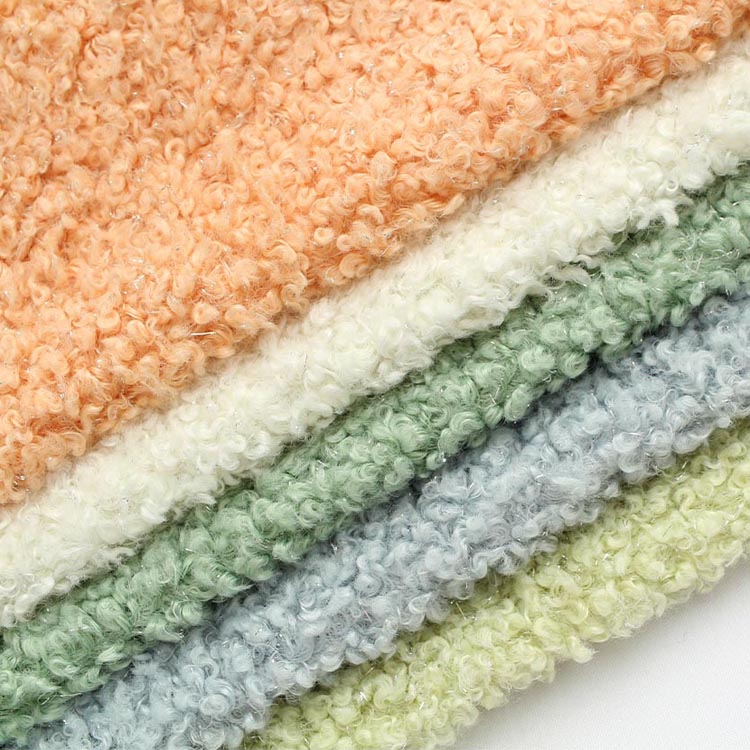 English
English Español
Español  Português
Português  русский
русский  Français
Français  日本語
日本語  Deutsch
Deutsch  tiếng Việt
tiếng Việt  Italiano
Italiano  Nederlands
Nederlands  ภาษาไทย
ภาษาไทย  Polski
Polski  한국어
한국어  Svenska
Svenska  magyar
magyar  Malay
Malay  বাংলা ভাষার
বাংলা ভাষার  Dansk
Dansk  Suomi
Suomi  हिन्दी
हिन्दी  Pilipino
Pilipino  Türkçe
Türkçe  Gaeilge
Gaeilge  العربية
العربية  Indonesia
Indonesia  Norsk
Norsk  تمل
تمل  český
český  ελληνικά
ελληνικά  український
український  Javanese
Javanese  فارسی
فارسی  தமிழ்
தமிழ்  తెలుగు
తెలుగు  नेपाली
नेपाली  Burmese
Burmese  български
български  ລາວ
ລາວ  Latine
Latine  Қазақша
Қазақша  Euskal
Euskal  Azərbaycan
Azərbaycan  Slovenský jazyk
Slovenský jazyk  Македонски
Македонски  Lietuvos
Lietuvos  Eesti Keel
Eesti Keel  Română
Română  Slovenski
Slovenski  मराठी
मराठी  Srpski језик
Srpski језик
Why Is Woolen Fabric Set to Become the Fabric of Choice for Premium Apparel and Interiors?
2025-11-05
Woolen fabric is distinguished by its natural fibre composition, thermal regulation, breathability, durability and aesthetic appeal.
Node 1: What is woolen fabric (and what are its key parameters)
Woolen fabric refers to textile constructions produced from carded wool yarns (rather than worsted) or suitable wool fibre blends, typically characterised by a softer hand, fuller cross-section, and insulating performance.Below are typical specification parameters for a high-quality woolen fabric offering.
| Parameter | Typical Value / Description |
|---|---|
| Fibre type | 100 % wool or wool-rich blend (e.g., Merino wool, lambswool) |
| Yarn construction | Carded yarns or loosely twisted wool slivers; sometimes wool blended with synthetics for durability |
| Fabric weight | Medium to heavy (e.g., 280–450 g/m²) to provide warmth and structure |
| Weave/knit structure | Woven or knitted; fuller surface texture, e.g., flannel, bouclé, twill or plain with soft finish |
| Finishing treatments | Thermal set, brushing, anti-pilling finish, durable water repellent (DWR) or odor control finish |
| Performance characteristics | Good insulation even when damp, breathable, moisture-managing, odour resistant |
These parameters support the claims of premium feel, functional performance and aesthetic versatility.
Why choose woolen fabric (advantages and functional benefits)
Woolen fabric offers a number of benefits that set it apart from many synthetic or less premium natural fabrics. The following outlines key advantages:
-
Thermal regulation & comfort – Because wool fibres trap air and have inherent elasticity, woolen fabrics maintain warmth in cold conditions and moderate temperature when warm. They also retain insulation capacity when damp.
-
Breathability & moisture-management – Wool naturally absorbs moisture vapour and releases it, making the fabric comfortable for extended wear and variable conditions.
-
Durability and resilience – The natural crimp and fibre structure give woolen fabrics resistance to creasing and good shape retention. When properly finished, pilling and abrasion resistance are improved.
-
Sustainability credentials – Wool is renewable, biodegradable and biodegradable in natural conditions. Industry innovation continues to enhance traceability and eco-friendly processing.
-
Versatility across sectors – While traditionally used for winter apparel and suiting, advanced wool technologies now enable performance outerwear, interiors and blended textile products.
In sum, these advantages justify woolen fabric’s margin premium, premium branding and its suitability for high-end applications.
How to select and implement woolen fabric (specification, sourcing, quality)
Implementing woolen fabric effectively into product lines, interiors or textile programmes requires attention to several practical steps:
-
Fibre sourcing & certification: Ensure the wool fibre comes from known origins, with certifications (e.g., The Woolmark Company) verifying performance standards, which is increasingly demanded in premium markets.
-
Specification of construction and finishing: Select the weight, weave/knit, finish treatments (e.g., anti-pilling, DWR, odor control) aligned with end-use. For example, for outerwear, a woolen fabric with DWR and wind-resistant finish may be preferred. Research shows wool denim built from wool fibres gives better drying feel than cotton.
-
Blend decisions: Determine whether to use 100 % wool or wool‐blends (wool + synthetic or wool + natural) for cost, performance or appearance trade-offs. Blended fabrics can enhance durability, wrinkle resistance or cost-effectiveness.
-
Performance testing & quality control: Ensure the fabric meets required performance metrics (shrinkage, pilling, colour fastness, weight variation, hand). Given the rise of premium wool innovation, performance testing is essential.
-
Supply chain management and trend alignment: Align the fabric purchase with seasonal demand, fashion colour/texture trends (e.g., for S/S 2025, wool re-imagined for lighter gauge and warmer climate use)
By following these steps, manufacturers, brands and specifiers can optimise both the aesthetic and functional value of woolen fabric in their textile programmes.
What’s next for woolen fabric (market trends & future direction)
The woolen fabric market is evolving, and certain trends indicate how it will develop in coming years:
-
Sustainability and circularity: There is growing demand for traceable, responsibly-sourced wool, recycled wool content, and circular textile systems.
-
Smart textiles & performance enhancements: Wool is increasingly combined with performance treatments (e.g., moisture-wicking, UV-protection, odor control, lightweight construction) and integrated into activewear and technical apparel.
-
Season-versatility and lighter gauge wool: Trend forecasters indicate wool will be used beyond heavy winter wear into lighter fabrics suitable for spring/summer, via fine-gauge knits and blends.
-
Interior design & mobility applications: Woolen fabrics are gaining traction in high-end furniture, automotive interiors and commercial spaces, due to their natural fire-resistance, acoustic properties and luxury appeal.
-
Market growth trajectory: Reports show the global wool market (including woolen fabrics and blends) is projected to grow over the next decade, especially driven by high-quality wool and performance segments.
For specifiers, the implication is clear: woolen fabric is not simply a legacy luxury textile—it is repositioning as a functional, sustainable, versatile textile that meets modern performance and aesthetic demands.
Common Questions & Answers
Q: What is the difference between woolen fabric and worsted fabric?
A: Woolen fabric is made from carded wool yarns, producing a softer, fuller texture with more trapped air for insulation; worsted fabric uses combed yarns with fibres aligned, resulting in a sleeker surface and tighter structure.
Q: How should woolen fabric be cared for to maintain its appearance and performance?
A: Woolen fabric should be dry-cleaned or carefully hand-washed per manufacturer instructions, dried flat or hung, stored away from moths, and dealt with pilling or surface wear promptly; avoid high-heat exposure since wool fibre structure can degrade with excessive heat or aggressive mechanical treatment.
Conclusion
In summary, the adoption of premium woolen fabric offers textiles professionals a compelling combination of natural luxury, performance functionality and future-ready positioning. By understanding its key parameters, leveraging its advantages, selecting appropriately and aligning with emerging trends, brands and manufacturers can deliver differentiated products. The market for woolen fabric is moving forward—driven by sustainability, performance and versatility—and now is a strategic moment to engage. For further details about premium woolen fabric specification, sourcing and collaboration efforts, please contact Zhejiang Jufei Textile Co., Ltd., which offers a wide portfolio of high-quality woolen fabrics. Contact us for more information.
-
E-mail
-
Call Us
-
Address
Guancheng International Keqiao Shaoxing, Zhejiang, China
If you have any enquiry about quotation or cooperation, please feel free to email or use the following inquiry form. Our sales representative will contact you within 24 hours.
Copyright © 2022 Zhejiang Jufei Textile Co., Ltd.- Woolen Fabric, Knitting Fabric, Woven Fabric -All Rights reserved.






